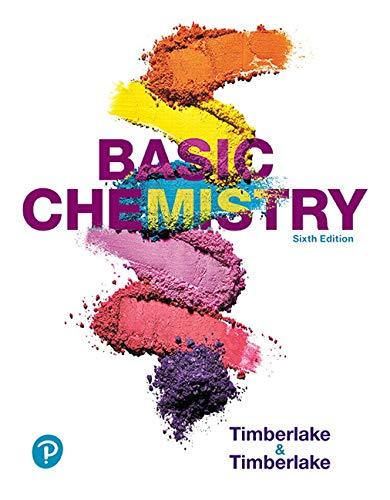
(a)
Interpretation:
Interpret the cooling curve from the temperature 1100 C and -100 C and show the solid state in it.
Concept Introduction:
A graphical plot that represents changes in temperature with respect to time for a material over a range of temperature through which it cools is said to be a cooling curve for the material.
(b)
Interpretation:
Interpret the cooling curve from the temperature 110o C and -10o C and show the freezing state in it.
Concept Introduction:
A graphical plot that represents changes in temperature with respect to time for a material over a range of temperature through which it cools is said to be a cooling curve for the material.
(c)
Interpretation:
Interpret the cooling curve from the temperature 110o C and -10o C and show the liquid state in it.
Concept Introduction:
A graphical plot that represents changes in temperature with respect to time for a material over a range of temperature through which it cools is said to be a cooling curve for the material.
(d)
Interpretation:
Interpret the cooling curve from the temperature 110o C and -10o C and show the condensing state in it.
Concept Introduction:
A graphical plot that represents changes in temperature with respect to time for a material over a range of temperature through which it cools is said to be a cooling curve for the material.
(e)
Interpretation:
Interpret the cooling curve from the temperature 110o C and − 10o C and show the gas state in it.
Concept Introduction:
A graphical plot that represents changes in temperature with respect to time for a material over a range of temperature through which it cools is said to be a cooling curve for the material.
Want to see the full answer?
Check out a sample textbook solution
Chapter 10 Solutions
Basic Chemistry Plus Mastering Chemistry With Pearson Etext -- Access Card Package (6th Edition)
- Please complete the reactions, thank youarrow_forwardConsider the synthesis. What is compound Y? Please explain what is happening in this question. Provide a detailed explanation and a drawing to show how the compound Y creates the product. The correct answer is D.arrow_forwardWhat would be the major product of the following reaction? Please include a detailed explanation of what is happening in this question. Include steps and a drawing to show this reaction proceeds and how the final product is formed. The correct answer is B. I put answer D and I don't really understand what is going on in the question.arrow_forward
- What is the product of the following reaction? Please explain what is happening in this question. Provide a detailed explanation and a drawing showing how the reagent is reacting with the catalysts to product the correct product. The correct answer is B.arrow_forwardWhat is the missing intermediate 1 and the final product 2. Please include a detailed explanation explaining the steps of malonic ester synthesis. Please include drawings of the intermediate and how it occurs and how the final product is former.arrow_forwardWhat would be the reagents and conditions above and below the arrow that will complete the proposed acetoacetic ester synthesis? If it cannot be done efficiently, then I will choose that answer. There could be 2 or 4 reagents involved. Please provide a detailed explanation and drawings showing how it would proceed with the correct reagents.arrow_forward
- For benzene, the ∆H° of vaporization is 30.72 kJ/mol and the ∆S° of vaporization is 86.97 J/mol・K. At 1.00 atm and 228.0 K, what is the ∆G° of vaporization for benzene, in kJ/mol?arrow_forwardThe reaction Q(g) + R(g) → Z(l) is shown to be exothermic. Which of the following is true concerning the reaction. it is spontaneous only at High T, it is spontaneous at low T it is nonspontaneous at all T it is spontanrous at all T. it is non spontaneous only at low T.arrow_forwardThe reaction Q(g) + R(g) → Z(l) is shown to be exothermic. Which of the following is true concerning the reactionarrow_forward
- Which of the following has the largest standard molar entropy, S° (298.15 K) He H2 NaCl KBr Hgarrow_forwardWhich of the following is true for a particular reaction if ∆G° is -40.0 kJ/mol at 290 K and –20.0 kJ/mol at 390 K?arrow_forwardWhat is the major product of the following reaction? O O OH OH 1. BH 2. H₂O₂, NaOH OH OHarrow_forward
 Chemistry: Principles and ReactionsChemistryISBN:9781305079373Author:William L. Masterton, Cecile N. HurleyPublisher:Cengage Learning
Chemistry: Principles and ReactionsChemistryISBN:9781305079373Author:William L. Masterton, Cecile N. HurleyPublisher:Cengage Learning
